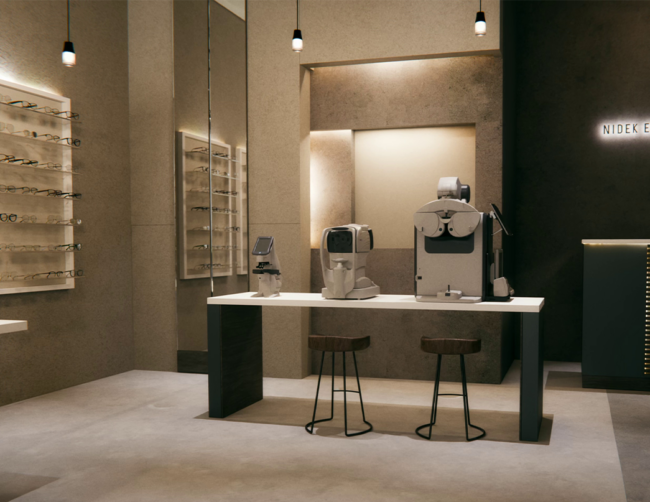NIDEK TS-610: Finding the Time & Space for your Clinical Needs
21 August 2025

NIDEK TS-610:A solution for any size of consulting room
Refraction has evolved, and so has the way we perform it. Many more optometrists conduct refraction using an automated phoropter these days.
Optometry faces challenges. The population is growing, but the world isn’t. We need time to deal with issues like myopia, dry eye or to view the results of OCT scans, for example. We need space for more consulting rooms or more devices, but we don’t have access or the budget to keep moving to larger buildings and even if we did, many practices are struggling to find clinical staff.
Birmingham Optical is aware of the issues our customers are facing in practice. The NIDEK TS-610 is so versatile it can work as a solution for any practice. It brings the market leading NIDEK RT-6100 automated phoropter and the workhorse NIDEK SC-1600 LCD chart into one clever little package to provide all you need for a flexible workstation.
Like all NIDEK phoropters, you have an easy-to-follow console to control charts and lenses. The difference is space. With the use of mirrors, there is a 5-metre working distance! However, the refraction is performed in a box 446 (W) x 520 (D) x 763(H) mm.
Designed to sit on a height adjustable table or suitable combi-unit, the TS-610’s compact design fits in any location. Other NIDEK products such as the NIDEK Tonoref III, AR-F or NIDEK lens meter allow for quick and easy data transfer using Bluetooth, LAN/WLAN or infrared communication.
Placing the Ts-610 next to a slit-lamp also works well in the growing number of ‘multi-function’ consulting rooms springing up. These small rooms make the most of the ‘ultra-short form’ refraction the NIDEK TS-610 offers, allowing for full eye examinations to take place in rooms perhaps as small as 2 by 2.5 metres. These
rooms often also house an audiology booth and a sink. They can be used for eye examinations, contact lens checks and audiology checks.
The great advantage of using a phoropter over a trial frame is the ability to demonstrate the old Rx very rapidly to the patient and then switch instantly to
the newest Rx. This ability to instantaneously switch between the old and new refractions allows patients to fully understand the benefit or need of
changing their prescription, or to understand that changes have been beneficial. The output from the system is the same as the other NIDEK phoropters too, meaning you can export the results directly into patient management systems, avoiding mistakes in typing and saving time.
One common argument against the use of phoropters is the near vision element. Classic phoropters have a reading rod which is pulled down with some form of reading card with a range of opto-types and near muscle balance or binocular balance tests. Many clinicians find this doesn’t allow for a full range of near vision tests.
With the fully self-contained NIDEK TS-610, every test that can be performed for distance vision can also be performed for near vision. This is also fast and easy, so there is no time wasted in setting up the near tests. This provides more rapid refraction and less inconvenience for you or the patient.
Ultimately, the NIDEK TS-610 provides a better refraction experience for everyone and does so within a very small space.
To find out more about the NIDEK TS-610, click here